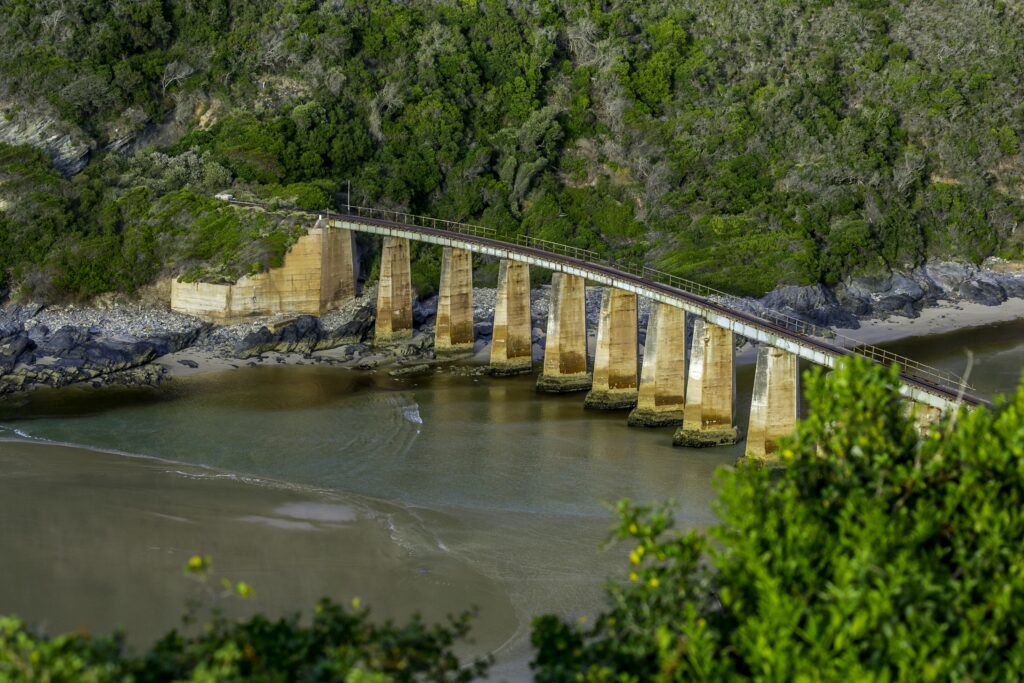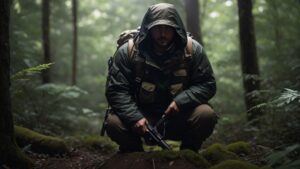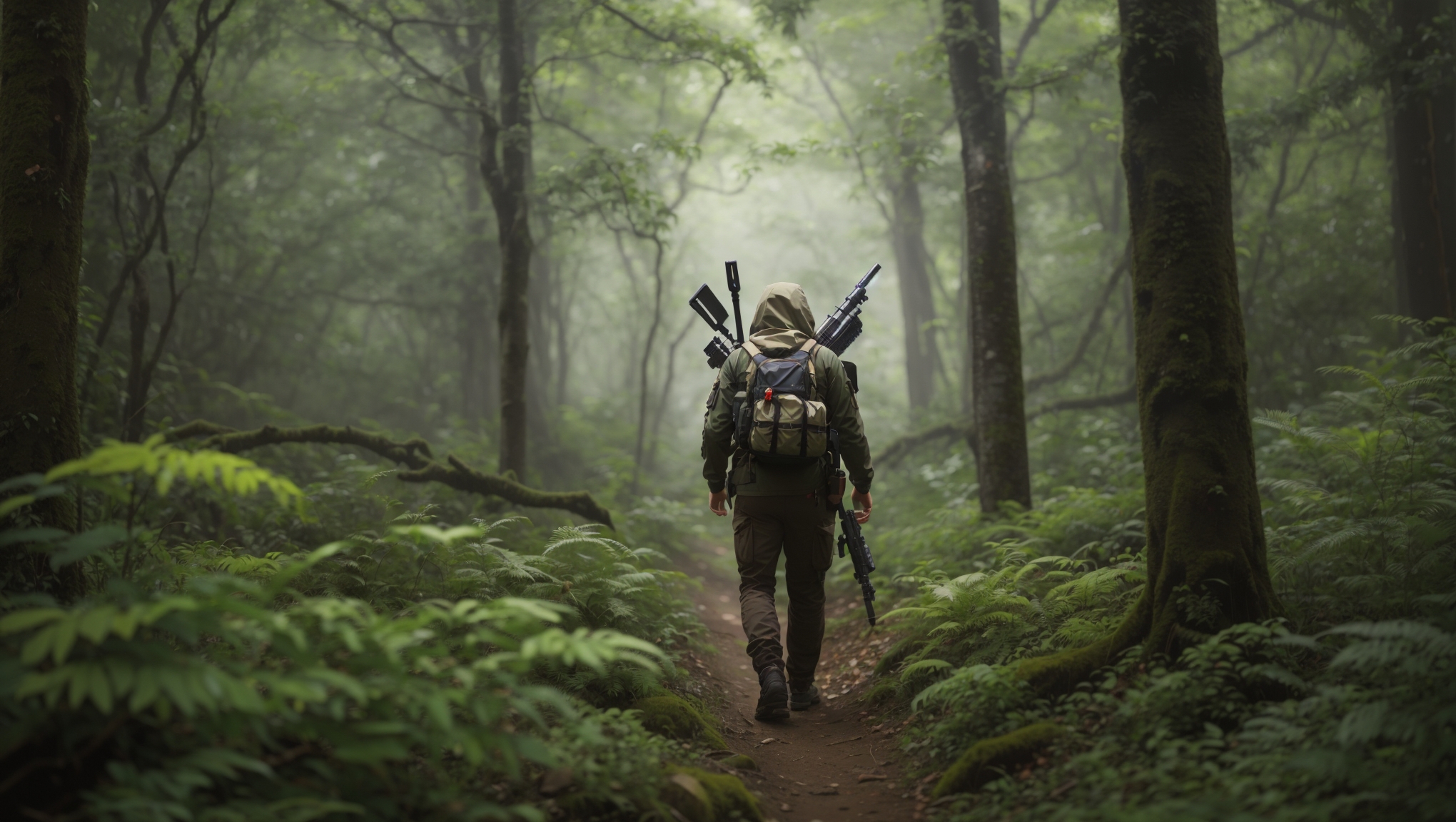

Identifying Edible Plants
Learning Plant Identification
When foraging for food in the wild, it is essential to be able to identify edible plants accurately. Start by learning about the plant species that are native to your region and understand their characteristics. Familiarize yourself with plant field guides or take a course on plant identification. Look for distinctive features such as leaf shape, color, and arrangement, as well as the presence of berries or flowers. Practice identifying plants with an expert or use a plant identification app to enhance your skills.Plants to Avoid
While it’s important to learn about edible plants, it is equally vital to be aware of plants that are toxic or poisonous. Some plants may resemble edible ones closely, making accurate identification crucial. Research and understand the poisonous plants in your area, especially those that share characteristics with edible varieties. Pay close attention to plants like poison ivy, poison oak, and certain species of mushrooms. Always err on the side of caution when in doubt and avoid consuming any plant unless you are completely sure of its safety.Testing for Edibility
Before consuming any wild plant species, it’s essential to test for edibility. Start by using the “Universal Edibility Test” to avoid any potential harm. Begin by touching a small portion of the plant to your lips and wait for a few minutes to see if there is any adverse reaction. If there is no reaction, place a small piece on your tongue and hold it there for 15 minutes without swallowing. If there are no ill effects, chew a small portion thoroughly and hold it in your mouth for another 15 minutes. If no adverse reactions occur, you can swallow the small portion and wait for at least 8 hours to ensure no negative effects. If all goes well, you may proceed to consume small quantities of the plant with caution and gradually increase your intake.Foraging for Insects
Types of Edible Insects
Insects are an excellent source of protein and can be found abundantly in the wild. Some common edible insects include crickets, mealworms, grasshoppers, ants, and larvae. These insects are nutrient-dense and can provide essential vitamins and minerals. Research the insects native to your area that are safe to consume and learn about their specific nutritional value. Ensure that you are confident in identifying edible insects before collecting or consuming them.Methods for Catching Insects
There are various methods you can use to catch insects for foraging. One technique is using a bug net or hand net to sweep through grasses, bushes, or low-hanging branches. Another method is setting up traps or baited containers, such as a pitfall trap or a container with food scraps. You can also locate insect nests or colonies and carefully collect them. Always handle insects with care and respect. Remember to release any non-edible or unwanted insects back into their natural habitat.
Fishing in the Wild
Choosing the Right Fishing Spot
When fishing in the wild, selecting the correct location is critical. Look for areas with calm waters, such as ponds, lakes, or slow-moving rivers, as these environments are more likely to have fish. Look for signs of fish activity, like jumping or splashing, as these indicate potential feeding areas. Additionally, consider fishing near structures like fallen trees or rocks, as these can provide hiding spots for fish. If possible, research the specific types of fish that inhabit the area you plan to fish in and learn about their preferred habitats.Different Fishing Techniques
There are various fishing techniques you can employ while in the wild. One common method is using a fishing rod and reel, which allows you to cast your bait or lure into the water and reel it back in. Another technique is using a fishing net or a cast net to catch fish in larger bodies of water. Additionally, you can learn how to set up and check fishing lines, such as jug lines or trotlines, which allow you to passively catch fish while attending to other tasks. Experiment with different fishing techniques to find what works best for you in different environments.Common Types of Fish to Catch
The types of fish you can catch in the wild vary depending on your geographic location. Research the local fish species in the area you are exploring to understand what you can expect to catch. Common examples include trout, bass, catfish, and carp. Additionally, consider the size and weight limits for each species, as regulations may exist to protect fish populations. Always follow local fishing regulations and practice catch-and-release when necessary to help maintain sustainable fish populations.Hunting Techniques
Tracking and Observing Wildlife
When hunting in the wild, knowledge of animal behavior and tracking techniques is essential. Learn how to identify tracks, scat, and other signs of wildlife activity. Familiarize yourself with the typical habits and movement patterns of the animals you are seeking. Practice your observational skills by spending time in nature and paying attention to sounds, sights, and scents that indicate the presence of wildlife. By understanding animal behavior and tracking techniques, you can increase your chances of a successful hunt.Tools for Hunting
Along with knowledge and skills, having the appropriate tools is crucial for hunting in the wild. Depending on the game you are pursuing, you may need a rifle, shotgun, bow, or crossbow. Ensure that you are trained and licensed to use any firearms or hunting equipment. Other essential tools include a hunting knife, binoculars, camouflage clothing, and calls to attract or communicate with animals. Carry appropriate safety gear, such as a compass, flashlights, and a first aid kit, to ensure your well-being during hunting trips.Ethical Considerations in Hunting
Hunting carries ethical responsibilities that all hunters should consider. Respect for the environment and the animals being hunted is paramount. Ensure that you understand and follow all hunting regulations and obtain any necessary permits or licenses. Practice humane and responsible hunting techniques, aiming for clean and quick kills. Respect the natural balance of ecosystems by avoiding overhunting or targeting protected or endangered species. Hunting can be a way to connect with nature and provide sustenance, but it must be done ethically and sustainably.
Trapping Small Game
Building a Simple Snare
Snaring is a useful technique for trapping small game in the wild. To build a simple snare, gather a wire or cordage that is long enough to create a loop with a diameter slightly larger than the animal you are targeting. Identify an area with animal activity, such as a well-used trail or near a den entrance. Set up the snare by forming a loop and creating a small noose using a slipknot. Position the snare at an appropriate height, typically at the animal’s head or neck level when passing through the area. Ensure that the snare is firmly secured and camouflaged to increase chances of success.Choosing the Right Location
Location is crucial when it comes to trapping small game. Research and understand the habits and territories of the animals you are targeting. Look for signs of animal activity, such as tracks, droppings, or chewed vegetation. Find areas that provide natural funnels or pinch points, where animals are likely to move through, such as narrow paths near water sources or between dense vegetation. Set your traps near these identified locations, ensuring they are well-hidden and strategically placed to maximize your chances of trapping targeted small game.Identifying Tracks and Trails
Being able to identify animal tracks and trails is essential for successful trapping. Study common animal tracks in your area and learn to distinguish different species. Pay attention to the size, shape, and depth of tracks, as well as claw marks or other distinctive features. Trails often indicate regular animal movements and can be identified by well-worn paths, disturbed vegetation, or droppings along a specific route. By observing tracks and trails, you can gain insight into the behavior and routines of small game and increase your trapping success.Finding Water Sources
Understanding Water Needs
Finding a reliable water source is crucial for survival in the wilderness. It is essential to understand your water needs and prioritize locating water. On average, a person requires a minimum of two liters of water per day for drinking and basic hygiene. In hot or physically demanding environments, this requirement may increase. Take into account the duration of your stay and plan accordingly. Always prioritize safe water sources and be prepared to purify water if necessary.Identifying Natural Sources
In the wild, natural water sources can be found in various forms. Look for streams, rivers, and lakes, which are usually reliable sources of fresh water. Study topographic maps or use navigational tools to locate natural water formations, such as springs or oases. Consider the geography and vegetation in your surroundings, as certain plants like cacti or vines may indicate nearby water sources. Be cautious when collecting water from stagnant or standing sources, as they may contain contaminants. Always use your judgment and consider the quality of the water before consuming it.Collecting and Purifying Water
Once you have located a water source, it’s essential to know how to collect and purify water effectively. Carry a collapsible container or water bottles to collect water from natural sources. If the water appears cloudy or contains debris, use a cloth or filter to strain it before consumption. To purify water, there are several methods available. Boiling water for at least one minute is a reliable way to kill most microorganisms. Alternatively, you can use water purification tablets or water filters specifically designed for outdoor use. Follow the instructions and guidelines provided with your chosen purification method to ensure proper disinfection.
Gathering Wild Berries and Nuts
Identifying Edible Berries and Nuts
Wild berries and nuts can provide valuable nutrition and are often found in the wilderness. However, it is crucial to identify edible species correctly to avoid any potential harm. Familiarize yourself with the common edible berries and nuts in your area. Study their appearance, growth patterns, and any distinguishing features. Berries like blackberries, raspberries, and blueberries are often safe to consume, whereas nuts like acorns, walnuts, and hickory nuts may provide nourishment. Do thorough research and consult reliable resources to ensure accurate identification.Finding Berry and Nut Trees
Knowing where to find berry and nut trees is key to successful foraging. Forested areas or areas with diverse vegetation are often rich in these food sources. Look for fruit-bearing shrubs or small trees that produce berries, such as thickets or the edges of wooded areas. Nut trees, on the other hand, are usually larger and can be found in forested regions or open grasslands. Oak, walnut, and chestnut trees are common examples. Be observant and take note of the visual cues, such as the foliage and the presence of ripe fruit or nuts, to locate these valuable food sources.Harvesting Techniques
When it comes to harvesting wild berries and nuts, there are a few techniques to keep in mind. Harvest berries when they are fully ripe and easily detach from the plant with a gentle tug. Carefully pick each berry or use a small container to collect them. Avoid eating any damaged or moldy berries. When collecting nuts, wait until they have fallen naturally or use a long stick to knock them off the tree. Remove the outer shells or husks and ensure the nuts are clean and free from any signs of damage or infestation. Proper harvesting techniques ensure that you gather the most nutritious and safe food from the wild.Using Nature as a Guide
Animal Behavior and Food Sources
Observing animal behavior and understanding their food sources can be highly beneficial when foraging for food in the wild. Many animals exhibit specific feeding patterns and preferences. Observe the behavior of animals in your surroundings, such as birds or mammals, and take note of their feeding habits. If a particular species is consistently feeding on a specific plant or insect, it can be an indication of its edibility. However, always cross-reference your observations with other reliable sources to ensure accuracy before attempting to consume any new food sources.Observing Birds and Other Animals
Birds and other animals can serve as excellent guides to finding food sources in the wild. Learn to identify bird calls and behavior to determine if they are feeding or congregating in a specific area. Different bird species have varying diets and habitat preferences, so their presence can indicate the availability of certain food sources or water nearby. Observe other animals as well, such as squirrels, deer, or rodents, and take note of their feeding patterns and preferred habitats. By observing wildlife, you can gain valuable insights into the abundance and availability of food in your surroundings.Interpreting Signs of Wildlife
In addition to animal behavior, understanding and interpreting signs of wildlife can be essential when searching for food in the wild. Look for tracks, scat, or scratch marks on trees, as these can indicate the presence of animals. Learn to distinguish between fresh and old signs to determine if the area is actively used by wildlife. Significantly disturbed vegetation may signify feeding areas or trails used by certain animals. By interpreting these signs, you can uncover hidden food sources and increase your chances of successful foraging in the wild.
Emergency Food Sources
Exploring Emergency Food Options
In survival situations, it is essential to explore various emergency food options beyond traditional foraging and hunting. Familiarize yourself with edible plant parts that are often overlooked, such as tree bark, roots, or certain insects. Acorns, for example, can be ground into flour-like consistency and used for cooking. Additionally, consider emergency food rations specifically designed for survival situations, which are compact and provide essential nutrients. Explore your surroundings and research alternative food sources that can sustain you during dire circumstances.Survival Kits and Rations
To be prepared for emergencies, it is crucial to have a well-stocked survival kit that includes food rations. Pack lightweight and high-calorie food items that have a long shelf life, such as energy bars, dried fruits, or jerky. Additionally, consider including dehydrated meals or MREs (Meals Ready to Eat) that provide sustained energy. Rotate these food supplies periodically to ensure freshness and maintain their nutritional value. Familiarize yourself with the contents of your survival kit and know how to use them effectively in a survival scenario.Food Preservation Techniques
Understanding food preservation techniques can be beneficial in extended stays or emergencies. Learn methods such as smoking, dehydrating, or canning to preserve perishable food items. Smoking meat or fish not only extends their shelf life but also enhances their flavor. Dehydrating fruits, vegetables, or meat can create lightweight and long-lasting food supplies. Canning is another effective preservation method that allows food to be stored for extended periods. Familiarize yourself with these techniques and practice them in controlled environments to ensure your ability to preserve food when needed.Can Food Preservation Methods Be Used in the Wild to Preserve Found Food?
Food preservation techniques can indeed be used in the wild to preserve found food. Methods like dehydration and smoking can help extend the shelf life of perishable items such as meat or fruits. By removing moisture or applying smoke, bacteria growth is inhibited, allowing the food to last longer. These techniques are particularly useful when resources are limited, making them essential survival skills in the wild.
Cautions and Considerations
Poisonous Plants and Animals
When foraging and hunting in the wild, it is crucial to be aware of the presence of poisonous plants and animals. Research and familiarize yourself with toxic plant species in your area to avoid accidental ingestion. Take precautions to avoid contact with poisonous plants like poison ivy or poison oak. Additionally, be cautious of venomous snakes, spiders, or insects that may pose a threat. Learn to identify and understand the behavior of potentially dangerous wildlife to prevent any harmful encounters. Always prioritize safety, and if in doubt, consult local authorities or experts.Sustainable Foraging Practices
While foraging for food in the wild, it is important to practice sustainable techniques to protect natural resources and ensure their long-term availability. Only take what you need and avoid over-harvesting or damaging plant populations. Use proper harvesting methods to minimize damage to plants or their surrounding environment. Avoid disrupting habitats or nesting areas of wildlife during your foraging activities. Always remember to leave the wilderness as you found it, respecting the delicate balance of ecosystems.Respecting the Environment
Respecting the environment should be a priority when engaging in any activities in the wilderness. Minimize your impact by following designated trails and avoiding trampling vegetation unnecessarily. Follow local regulations and guidelines regarding camping, fires, and waste management. Pack out any trash or waste and dispose of it properly. Respect the natural habitats and adhere to ethical principles of leaving no trace. By respecting the environment, you contribute to the preservation of natural ecosystems and ensure the enjoyment of the wilderness for future generations. In conclusion, knowing how to find food in the wild is a valuable skill that can enhance your survival and outdoor experiences. Whether foraging for edible plants, catching insects, fishing, hunting, trapping, or gathering wild foods, it is critical to expand your knowledge and skills in each area. By understanding plant and animal identification, sustainable practices, and survival techniques, you can safely and responsibly explore nature’s bounty as you connect with the wilderness. Remember to always prioritize safety, respect the environment, and seek guidance from local experts or experienced individuals to supplement your wilderness skills.
I’m Alex, the author behind True Survivalist. As a survival enthusiast myself, I’ve created this website to serve as a valuable resource for fellow survivalists and preppers. Whether it’s understanding survival situations, emergency preparedness, or finding the right survival gear, I’ve got you covered. Through a series of informative guides, I aim to provide answers to commonly asked questions, debunk common myths, and help you avoid common mistakes. At True Survivalist, I believe in equipping you with the knowledge and tools you need to be prepared for any survival scenario. Join me on this journey of self-reliance and resilience.
